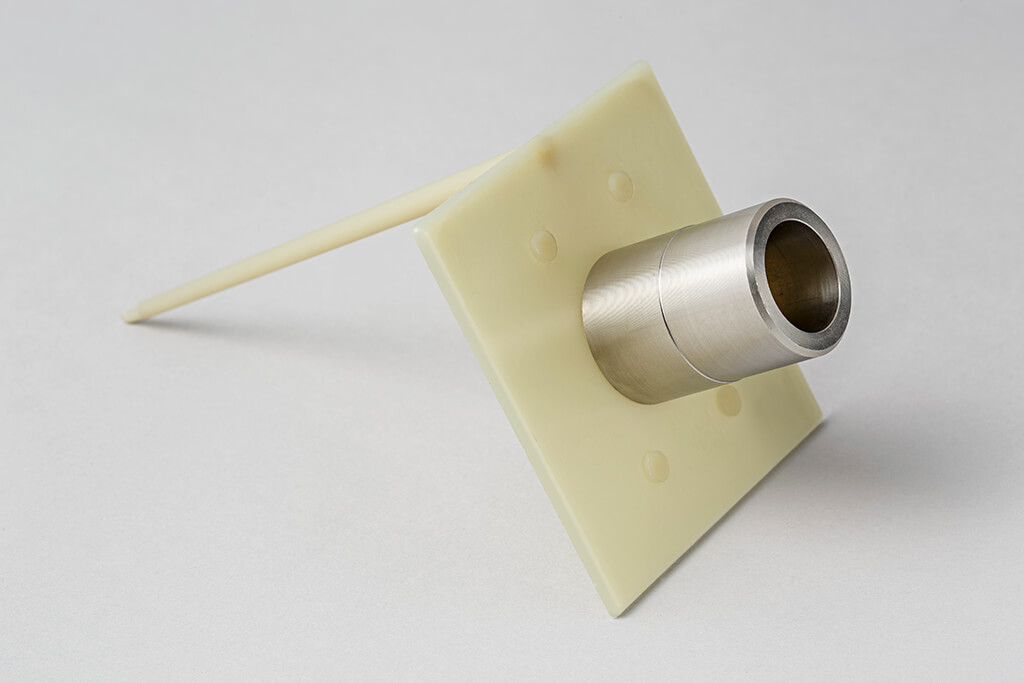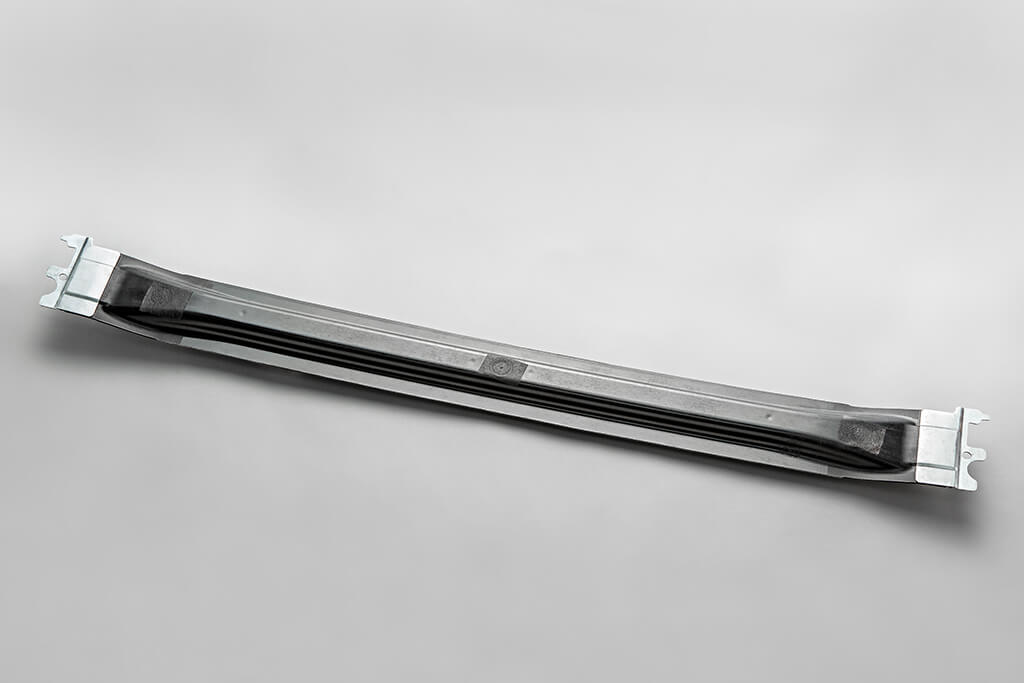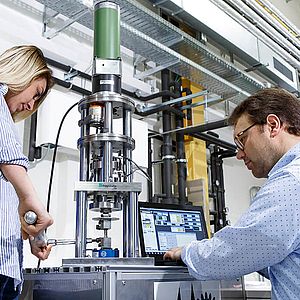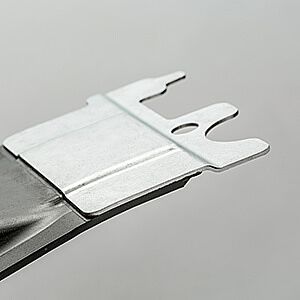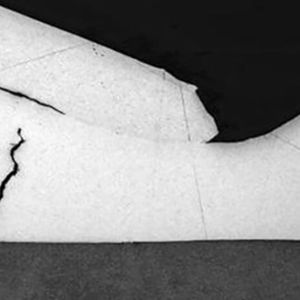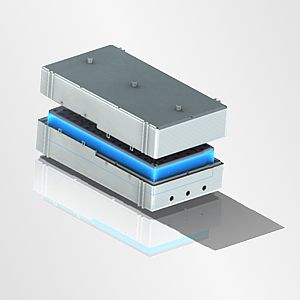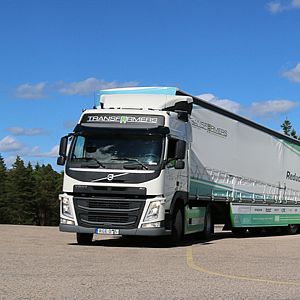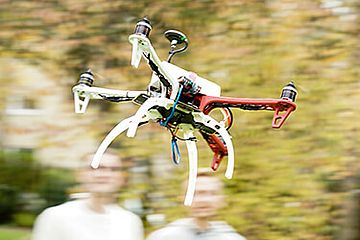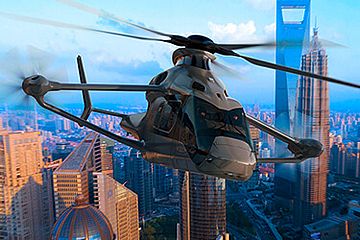Material hybrids – joining of plastics and metals.
Method development, reliable design, process optimization, lightweight design potential, functional integration
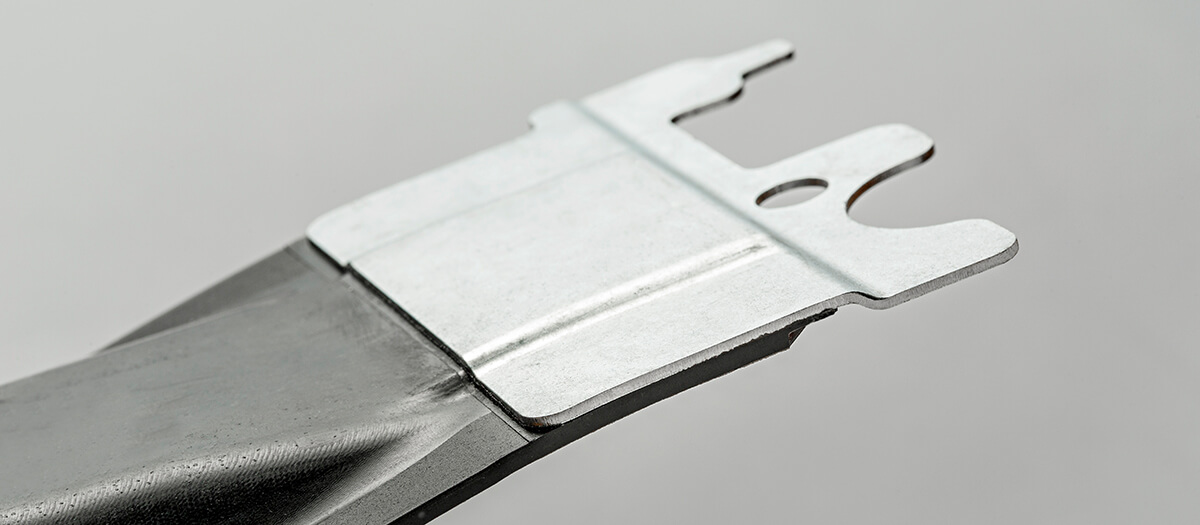
The requirement to integrate and implement different functions and properties in one component often necessitates joining dissimilar materials to each other. Thus different areas of a component can be designed to meet the relevant requirements. Combining plastic and metal in one component offers enormous potential for lightweight design and the possibility of integrating several functions in one part. Joining the two materials at their points of contact and reliably designing the joint connection in respect of the operating load is a major challenge.
Method for designing the hybrid joint
Joining thermoplastic materials and metals play a huge role in the automotive industry. The technical and economic limits are quickly reached when joining metal and plastic components to each other using conventional joining technologies, such as screwing, riveting or bonding. Laser technology is a cost-efficient key technology for producing high-quality hybrid components in large-scale production if the highest possible strength of a hybrid connection is to be achieved. The interface between the two dissimilar materials has a huge effect on strength. The interface can be structured by laser in order to achieve the highest possible strength. At present there are different structuring approaches which differ in their processing duration and achievable strength. One approach with which high strength can be achieved creates a sponge-like surface with a self-generating, “cone-like protrusions” (CLP) structure with undercuts on the metal joining partner.
During the joining process, the plastic melt flows into these undercuts and creates a joint between the two mating parts. Processes based on thermal conduction or thermal radiation can be used as joining processes. In conventional production processes, such as injection molding, pressing or resin transfer molding (RTM), the structured metal mating partners can be inserted and joined in the relevant production process itself.
Reliable highly loaded lightweight hybrid joints
As the technology is still under development, characteristic values regarding mechanical strength and long-time behavior under real operating conditions are not yet available. Design methods for safely designing such hybrid joints have often not been studied sufficiently due to the newness of this technology. In addition, the effect of the various production concepts on the mechanical strength has not been sufficiently evaluated. For these unresolved issues, Fraunhofer LBF has developed a design concept which makes it possible to design hybrid joints in an operationally reliable manner.
An extensive material analysis in respect of static strength and fatigue strength properties is carried out on simple test specimens ((Fig. 1) under axial and multi-axial load. The results are the input variables in a failure criterion which is used to derive an equivalent stress hypothesis from local variables using numerical calculations.
Example of use
In the HiBriLight project funded by the Federal Ministry of Education and Research, this technology was demonstrated on a roof bow (Fig. 2) based on a 7-series BMW. The project partners Werkzeugbau Hofmann, Weber Fibertech, BMW Group, Fraunhofer ILT and Fraunhofer LBF substituted a conventional roof bow made of the carbon fibers with a thermosetting matrix for a component with a thermoplastic matrix. This means that the roof bow can be manufactured from a conventional PA6 with short glass fiber reinforcement in a variothermal pressing process. There, the structured connection plates are inserted into the pressing tool and surrounded by the melt. The roof bow is reinforced locally with unidirectional tapes to increase the component’s stiffness. The roof bow is welded to the body via the structured connection plates.
Solution opens up high savings potential
It is particularly noteworthy that this new technology has reduced process time by 70% and raw material costs by 45% compared to the conventional design concept. Internal pressure tests on simple test specimens, as shown in Fig. 1, demonstrated the internal compressive strength, enabling the technology to be used for pressure-bearing applications. .
Customer benefits
The method developed by Fraunhofer LBF for designing hybrid joints in an operationally reliable manner makes it possible to design joints of thermoplastic materials and metals which are fail-safe. This includes analysis of the interface using microscopic methods, modeling for numerical calculations and mechanical determination of the characteristics of different stress states at specimen and component level.
Abstract
With the method developed at Fraunhofer LBF for reliably designing hybrid joints, it is possible to design highly loaded lightweight hybrid joints which are fail-safe. The method makes it possible to obtain a reliable statement about the operational safety of the joint with manageable effort. The numerical calculation can be used to detect critical component areas and they can be improved by means of design optimization. The hybrid joint can be investigated with regard to failure behavior based on the mechanical and analytical investigation methods available. With this method, the customer can be offered significant added value for evaluation of the hybrid joint in the first development phase. This can be used to optimize the component and thus, among other things, to make better use of the lightweight design potential.

“Hybrid components of metal and fiber-reinforce plastic promise the best results in terms of lightweight design and functional integration. The investigations carried out by Fraunhofer LBF regarding the short- and long-term strength help us to better assess these innovative construction methods.” Norbert Stötzner, Weber Fibertech GmbH
Contact
- Dominik Spancken, M.Eng.
- Phone: +49 6151 705-412
- dominik.spancken@lbf.fraunhofer.de
